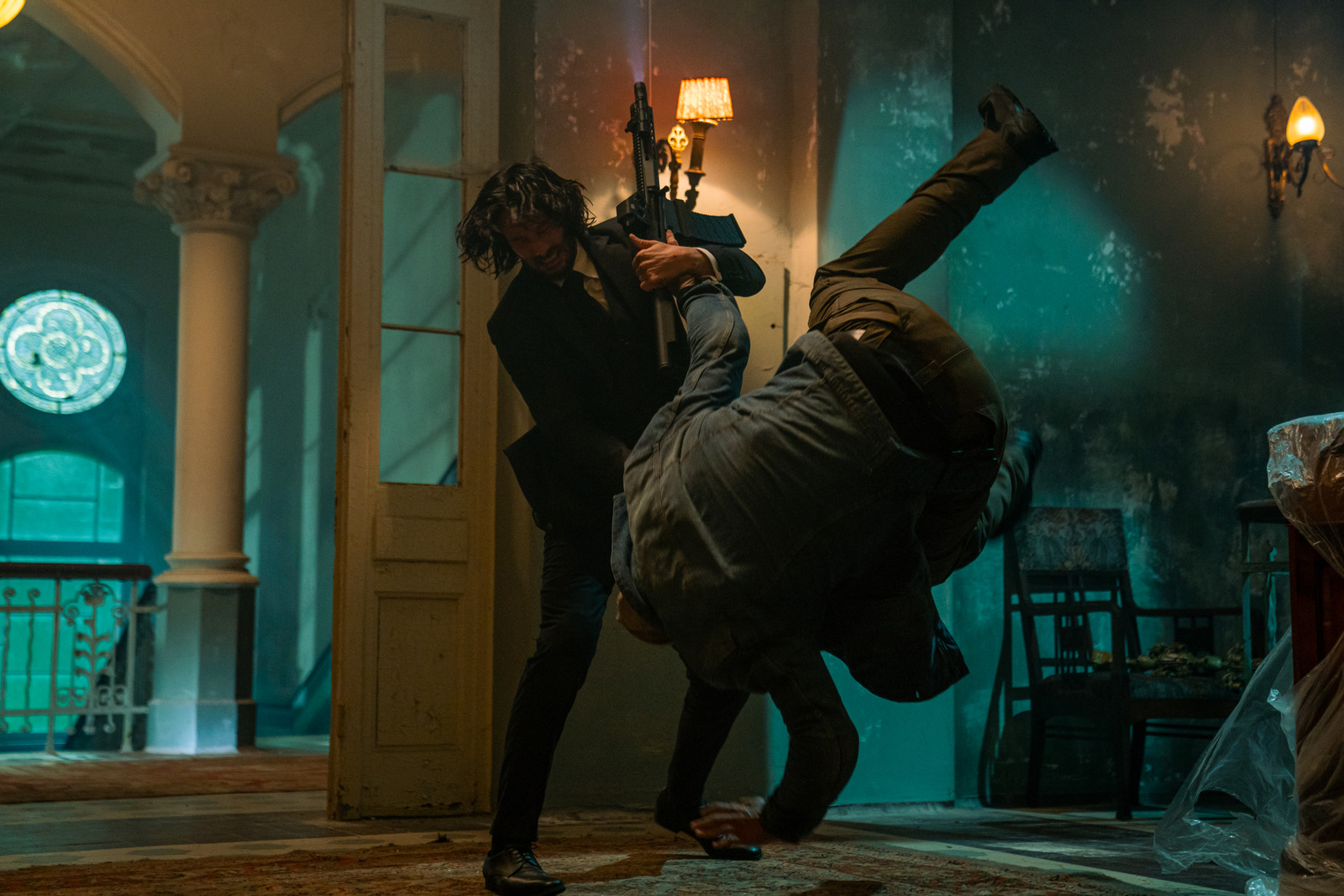
Film critic Sam Hastings finds John Wick: Chapter 4 to be a worthy entry in the beloved franchise
Since his debut almost ten years ago, Keanu Reeves’ John Wick has quickly emerged as one of the most iconic characters created in the first quarter of this century. Few popular film franchises have so garnered such a firm reputation for reliably delivering excellent filmmaking as the first three entries of the John Wick series, under the care of stunt performer and choreographer turned director Chad Stahelski. These films have enjoyed wide critical and commercial success, being praised for constructing a vivid world of heightened reality using bold art direction, a stellar gallery of colourfully realized characters, and the best of the best in contemporary American action filmmaking. All this is to say that John Wick: Chapter 4, the latest entry in this remarkable series, had much to deliver and great potential to disappoint.
harkening back to the cartoonish villains of the spy films of the 60s, Skarsgård manages to serve as a frightening adversary for John, earning our ire
After reintroducing us to John Wick in characteristic excess, this film throws us straight into the plot, introducing, our primary antagonist, the Marquis de Gramont (Bill Skarsgård). Amongst a very memorable cast of characters – in a film that introduces an ambitious number of new characters – the Marquis stands out thanks to Skarsgård’s delightful performance; harkening back to the cartoonish villains of the spy films of the 60s, Skarsgård manages to serve as a frightening adversary for John, earning our ire, despite an outrageous French accent of dubious authenticity that could have felt silly if delivered by a less skilled actor.
Once the story is in motion, John Wick: Chapter 4 is a relentless film. Clocking in just shy of three hours, many might be intimidated by the runtime, with good reason. Though never boring – the film is exceptionally fast paced and densely populated with high-octane action – the runtime is certainly felt, though not in an unpleasant way; Stahelski uses our impatience against us, leaving us as exhausted as John Wick, forcing us to empathise with his desperate desire to escape to a life of tranquillity. Displaying amazing creativity in every single fight, the stunt team gets as much value from every moment as is possible. They stretch each scene just beyond what was necessary, squeezing all the action to be had from every setting, character and idea, in a way that seems to exhaustively use every available item in an action filmmaker’s toolkit.
Stahelski flaunts his influences proudly, prominently taking cues from the martial arts films of Hong Kong and Japan as the previous films did, leaning into this most in an excellent extended sequence in the Osaka Continental, featuring wonderful dance-like sword choreography and some very creative use of archery, nunchaku and sumo. While the third instalment in this series toyed with imagery of John Wick as a cowboy, this fourth film wholeheartedly embraces the influence of the Spaghetti Western, featuring horseback gun brawls and a highly suspenseful duel at dawn, complete with a score which desperately and futilely attempts to ape the work of Ennio Morricone.

The most interesting of the various genres that this film is steeped in however, is the genre that historically first made use of the stunt performer’s talents: the slapstick comedies of the silent era. As in the previous films, John Wick takes as much from Bruce Lee as he does from Buster Keaton, with the ultraviolence being excellently interwoven with comedic falls, crashes and a remarkable amount of genuinely hilarious moments of people falling down the stairs. The film’s physical comedy is best embodied by one new character, the blind swordsman only referred to as Caine (Donnie Yen). Caine’s blindness forces the stunt team to be incredibly inventive with any fight in which he participates, either for action or humour’s sake, leaving Yen as the film’s standout action hero and comedic heavyweight.
Stahelski trusts the audience’s suspension of disbelief in a manner usually reserved for sci-fi and fantasy
Despite these influences from the past, Stahelski stays modern in many ways, particularly with his decidedly contemporary approach to lighting, production design and costume. With blatantly absurd sets featuring neon light soaking every surface, Stahelski trusts the audience’s suspension of disbelief in a manner usually reserved for sci-fi and fantasy, seemingly for the sole purpose of making our heroes and villains look cool as they meet in conflict (a goal that is certainly met without difficulty).
Whether more John Wick films will follow is anyone’s guess, but John Wick: Chapter 4 feels conclusive in a way that no other entry in the series has. While the underworld of assassins that Stahelski has conjured over the past decade certainly could prove to be a great environment for other action stories over the coming years, this film certainly felt as though it left John Wick with some well-earned peace not to be disturbed, fantastically winding down a series which has been defined by constant escalation.
Verdict:
Even amongst an exceptional series of films, John Wick: Chapter 4 stands out as a remarkable entry in the canon of modern action cinema, with Stahelski’s revolutionary modern filmmaking fused with a deference for the action cinema that preceded him. A diverse cast of memorable characters populate an unrelenting and dense 170 minutes that will leave audiences entirely satisfied, if also desperate for respite.
8/10
John Wick: Chapter 4 is in cinemas now
For more on recent cinematic releases, check out these articles from Redbrick Film:

Comments